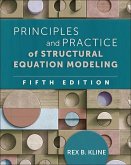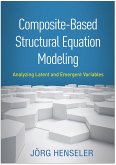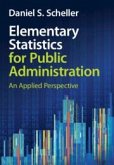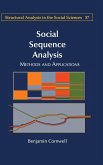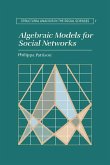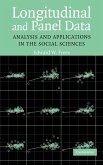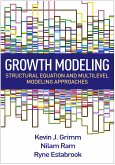Peter Cuttance / Russell Ecob (eds.)
Structural Modeling by Example
Herausgeber: Cuttance, Peter; Ecob, Russell
Peter Cuttance / Russell Ecob (eds.)
Structural Modeling by Example
Herausgeber: Cuttance, Peter; Ecob, Russell
- Gebundenes Buch
- Merkliste
- Auf die Merkliste
- Bewerten Bewerten
- Teilen
- Produkt teilen
- Produkterinnerung
- Produkterinnerung
This book offers a comprehensive overview of the application of structural equation models in the social and behavioural sciences and in educational research.
Andere Kunden interessierten sich auch für
![Principles and Practice of Structural Equation Modeling Principles and Practice of Structural Equation Modeling]() Rex B KlinePrinciples and Practice of Structural Equation Modeling121,99 €
Rex B KlinePrinciples and Practice of Structural Equation Modeling121,99 €![Composite-Based Structural Equation Modeling Composite-Based Structural Equation Modeling]() Jörg HenselerComposite-Based Structural Equation Modeling75,99 €
Jörg HenselerComposite-Based Structural Equation Modeling75,99 €![Elementary Statistics for Public Administration Elementary Statistics for Public Administration]() Daniel S SchellerElementary Statistics for Public Administration122,99 €
Daniel S SchellerElementary Statistics for Public Administration122,99 €![Social Sequence Analysis Social Sequence Analysis]() Benjamin CornwellSocial Sequence Analysis122,99 €
Benjamin CornwellSocial Sequence Analysis122,99 €![Algebraic Models for Social Networks Algebraic Models for Social Networks]() Philippa PattisonAlgebraic Models for Social Networks131,99 €
Philippa PattisonAlgebraic Models for Social Networks131,99 €![Longitudinal and Panel Data Longitudinal and Panel Data]() Edward W. FreesLongitudinal and Panel Data132,99 €
Edward W. FreesLongitudinal and Panel Data132,99 €![Growth Modeling Growth Modeling]() Kevin J GrimmGrowth Modeling85,99 €
Kevin J GrimmGrowth Modeling85,99 €-
-
-
This book offers a comprehensive overview of the application of structural equation models in the social and behavioural sciences and in educational research.
Produktdetails
- Produktdetails
- Verlag: Cambridge University Press
- Seitenzahl: 330
- Erscheinungstermin: 9. April 2015
- Englisch
- Abmessung: 235mm x 157mm x 24mm
- Gewicht: 688g
- ISBN-13: 9780521261951
- ISBN-10: 0521261953
- Artikelnr.: 35453294
- Herstellerkennzeichnung
- Libri GmbH
- Europaallee 1
- 36244 Bad Hersfeld
- gpsr@libri.de
- Verlag: Cambridge University Press
- Seitenzahl: 330
- Erscheinungstermin: 9. April 2015
- Englisch
- Abmessung: 235mm x 157mm x 24mm
- Gewicht: 688g
- ISBN-13: 9780521261951
- ISBN-10: 0521261953
- Artikelnr.: 35453294
- Herstellerkennzeichnung
- Libri GmbH
- Europaallee 1
- 36244 Bad Hersfeld
- gpsr@libri.de
Preface; List of contributors; 1. Introduction Peter Cuttance and Russell
Ecob; 2. An overview of structural equation modeling Russell Ecob and Peter
Cuttance; 3. Field dependence and the differentiation of neurotic syndromes
Katharine R. Parkes; 4. High school seniors' reports of parental
socioeconomic status: black-white differences Lee M. Wolfle; 5. Modeling
the hierarchical structure of learning Peter W. Hill; 6. A study of
longitudinal causal models comparing gain score analysis with structural
equation approaches Leslie Hendrickson and Barnie Jones; 7. Some structural
equation models of sibling resemblance in educational attainment and
occupational status Robert M. Hauser and Peter A. Mossel; 8. Applications
of structural equation modeling to longitudinal educational data Russell
Ecob; 9. The robustness of maximum likelihood estimation in structural
equation models Anne Boomsma; 10. An inquiry into the effects of outliers
on estimates of a structural equation model of basic skills assessment Joan
K. Gallini and Jim F. Casteel; 11. Testing structural equation models W. E.
Saris, J. Den Ronden and A. Satorra; 12. LISREL models for inequality
constraints in factor and regression analysis Henk Kelderman; 13. Issues
and problems in the application of structural equation models Peter
Cuttance; Appendix; Glossary; Index.
Ecob; 2. An overview of structural equation modeling Russell Ecob and Peter
Cuttance; 3. Field dependence and the differentiation of neurotic syndromes
Katharine R. Parkes; 4. High school seniors' reports of parental
socioeconomic status: black-white differences Lee M. Wolfle; 5. Modeling
the hierarchical structure of learning Peter W. Hill; 6. A study of
longitudinal causal models comparing gain score analysis with structural
equation approaches Leslie Hendrickson and Barnie Jones; 7. Some structural
equation models of sibling resemblance in educational attainment and
occupational status Robert M. Hauser and Peter A. Mossel; 8. Applications
of structural equation modeling to longitudinal educational data Russell
Ecob; 9. The robustness of maximum likelihood estimation in structural
equation models Anne Boomsma; 10. An inquiry into the effects of outliers
on estimates of a structural equation model of basic skills assessment Joan
K. Gallini and Jim F. Casteel; 11. Testing structural equation models W. E.
Saris, J. Den Ronden and A. Satorra; 12. LISREL models for inequality
constraints in factor and regression analysis Henk Kelderman; 13. Issues
and problems in the application of structural equation models Peter
Cuttance; Appendix; Glossary; Index.
Preface; List of contributors; 1. Introduction Peter Cuttance and Russell
Ecob; 2. An overview of structural equation modeling Russell Ecob and Peter
Cuttance; 3. Field dependence and the differentiation of neurotic syndromes
Katharine R. Parkes; 4. High school seniors' reports of parental
socioeconomic status: black-white differences Lee M. Wolfle; 5. Modeling
the hierarchical structure of learning Peter W. Hill; 6. A study of
longitudinal causal models comparing gain score analysis with structural
equation approaches Leslie Hendrickson and Barnie Jones; 7. Some structural
equation models of sibling resemblance in educational attainment and
occupational status Robert M. Hauser and Peter A. Mossel; 8. Applications
of structural equation modeling to longitudinal educational data Russell
Ecob; 9. The robustness of maximum likelihood estimation in structural
equation models Anne Boomsma; 10. An inquiry into the effects of outliers
on estimates of a structural equation model of basic skills assessment Joan
K. Gallini and Jim F. Casteel; 11. Testing structural equation models W. E.
Saris, J. Den Ronden and A. Satorra; 12. LISREL models for inequality
constraints in factor and regression analysis Henk Kelderman; 13. Issues
and problems in the application of structural equation models Peter
Cuttance; Appendix; Glossary; Index.
Ecob; 2. An overview of structural equation modeling Russell Ecob and Peter
Cuttance; 3. Field dependence and the differentiation of neurotic syndromes
Katharine R. Parkes; 4. High school seniors' reports of parental
socioeconomic status: black-white differences Lee M. Wolfle; 5. Modeling
the hierarchical structure of learning Peter W. Hill; 6. A study of
longitudinal causal models comparing gain score analysis with structural
equation approaches Leslie Hendrickson and Barnie Jones; 7. Some structural
equation models of sibling resemblance in educational attainment and
occupational status Robert M. Hauser and Peter A. Mossel; 8. Applications
of structural equation modeling to longitudinal educational data Russell
Ecob; 9. The robustness of maximum likelihood estimation in structural
equation models Anne Boomsma; 10. An inquiry into the effects of outliers
on estimates of a structural equation model of basic skills assessment Joan
K. Gallini and Jim F. Casteel; 11. Testing structural equation models W. E.
Saris, J. Den Ronden and A. Satorra; 12. LISREL models for inequality
constraints in factor and regression analysis Henk Kelderman; 13. Issues
and problems in the application of structural equation models Peter
Cuttance; Appendix; Glossary; Index.


